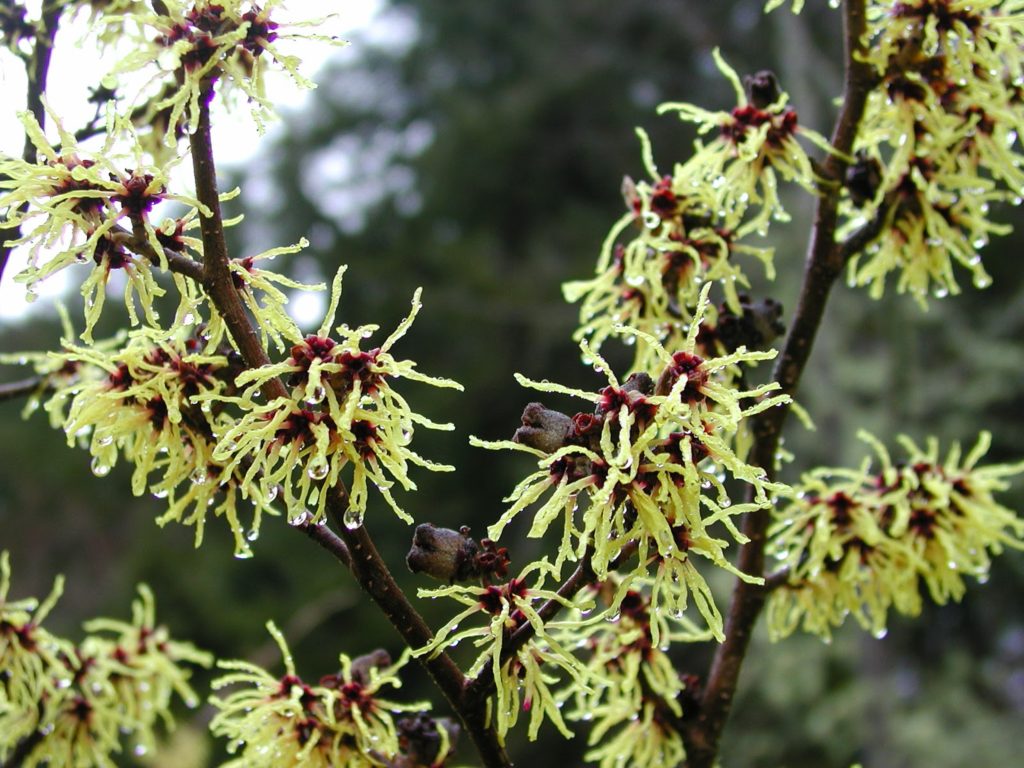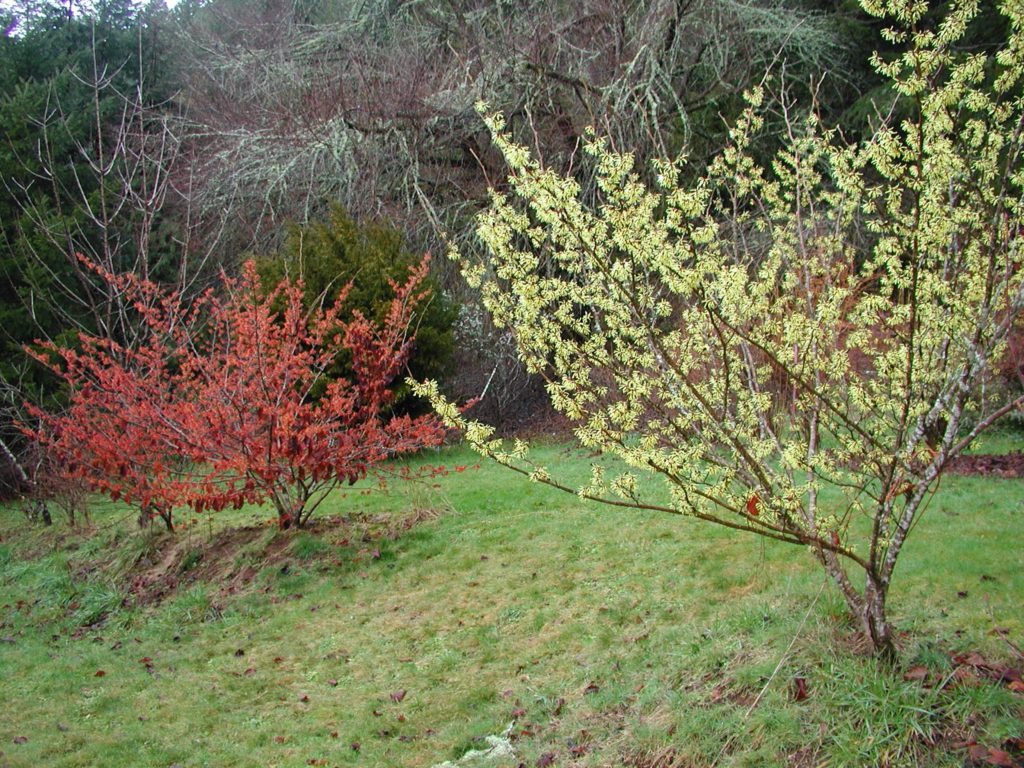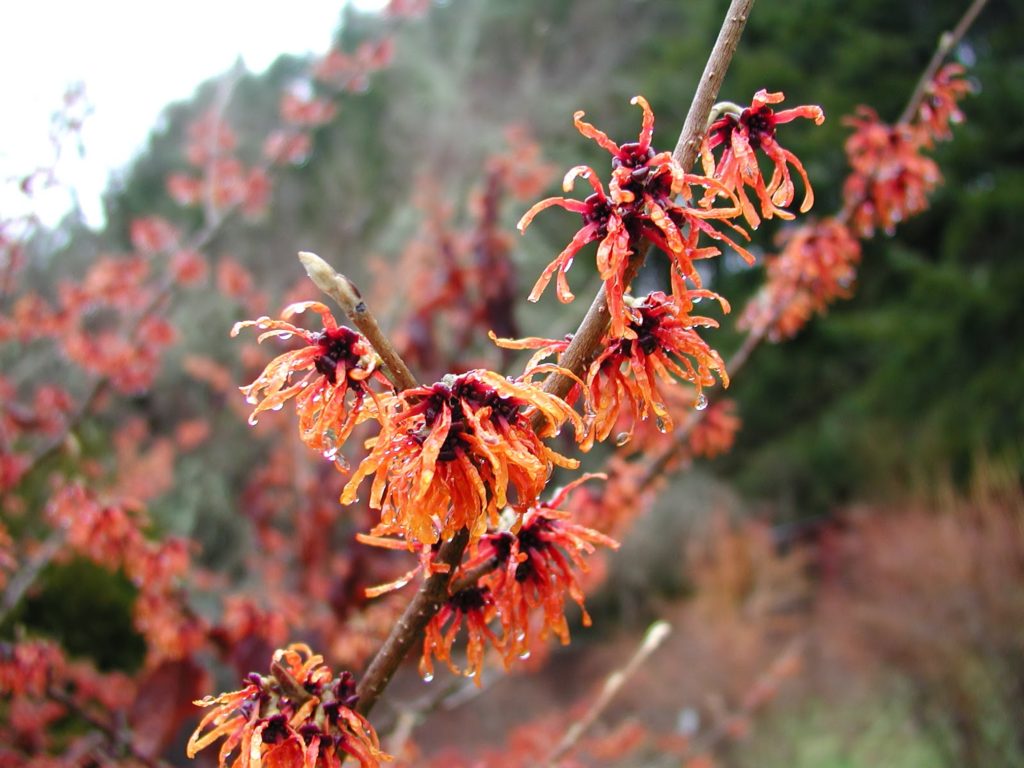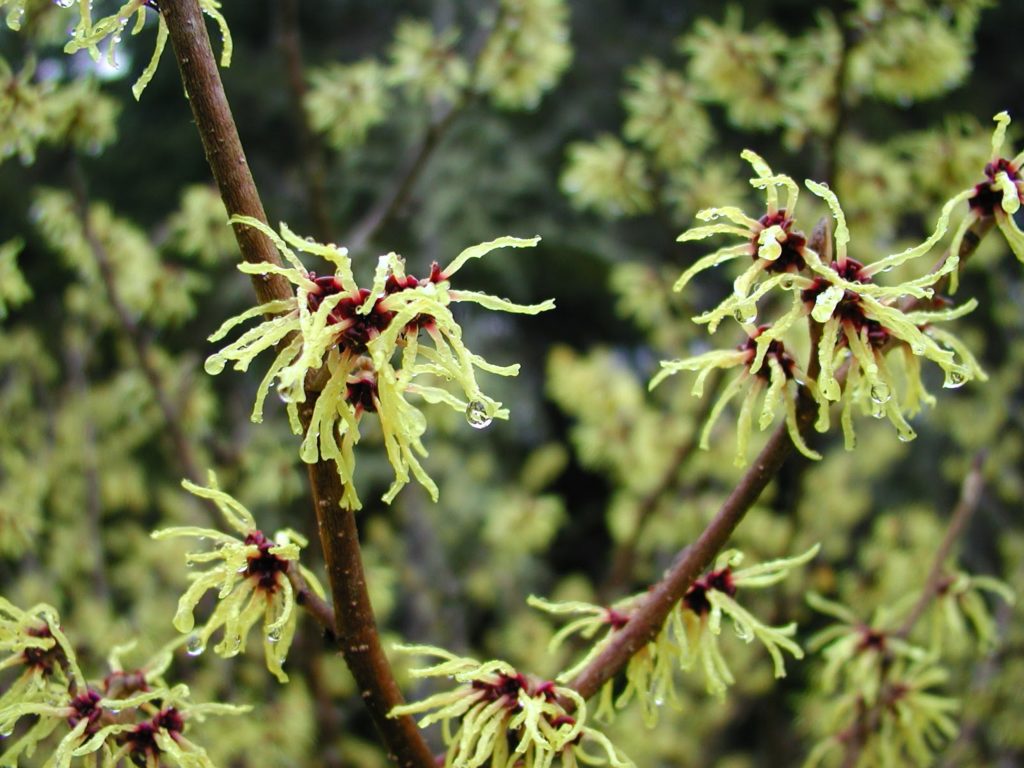One of the things I have always appreciated about living West of the Cascades is the abundance of year-round color. Through the depths of winter, things stay nice and green around here. Even still, I wasn’t expecting to see any flaming reds or yellows in February until these bright flowers caught my eye and I realized we have a pair of Witch Hazels in our yard. Having always wanted to grow one, this was an exciting discovery.
Their shape and hazelnut-like leaves should have given them away, but the bright yellow flowers were my final clue that we had a Witch Hazel (Hamamelis virginiana.) But what about this red one? I would like to say I keyed it out, but as life is busy, I took the path of least resistance and read the nursery tag still attached to a lower branch.
This one turned out to be a Jelena Witch Hazel (Hamamelis x intermedia ‘Jelena’.)
I was familiar with Witch Hazel already as a useful antiseptic and astringent herb for skin care, healing everything from blemishes to cuts and rashes, and for its soothing topical properties. I found an excellent recipe for a traditional Pilgrims’ Witch Hazel extract on this great blog, The Handmaiden’s Kitchen: Make Your Own Witch Hazel Extract. I also had a vague recollection of some intriguing folklore surrounding this plant, and found a great page on the Forest Service’s Celebrating Wildflowers Site:
“American witchhazel posses some interesting lore and uses. The most
interesting use as been the use of forked limbs as dowsing or divining
rods. Early European settles observed Native Americans using American
witchhazel to find underground sources of water. This activity is
probably where the common name witchhazel came from. “Wicke” is the
Middle English for “lively’ and “wych” is from the Anglo-Saxon word for
“bend.” American witchhazel was probably called a Wicke Hazel by early
white settlers because the dowsing end of the forked branch would bend
when underground water when detected by the dowser. This practice had a
widespread use by American settlers and then exported back to Europe.
Dowsing became an established feature of well-digging into the 20th
century.” -Larry Stritch
interesting use as been the use of forked limbs as dowsing or divining
rods. Early European settles observed Native Americans using American
witchhazel to find underground sources of water. This activity is
probably where the common name witchhazel came from. “Wicke” is the
Middle English for “lively’ and “wych” is from the Anglo-Saxon word for
“bend.” American witchhazel was probably called a Wicke Hazel by early
white settlers because the dowsing end of the forked branch would bend
when underground water when detected by the dowser. This practice had a
widespread use by American settlers and then exported back to Europe.
Dowsing became an established feature of well-digging into the 20th
century.” -Larry Stritch
For Horticulturalists and avid gardeners like myself who just want to geek out on this landscape gem, I found an excellent article by Erle Nickel on the Pacific Horticulture Society webpage:
Witch Hazel: Queen of Winter
And, lastly, a little fun folklore from the Appalachian Voice:
The Spooky, Eerie Nature of Witch Hazel




Leave a Reply